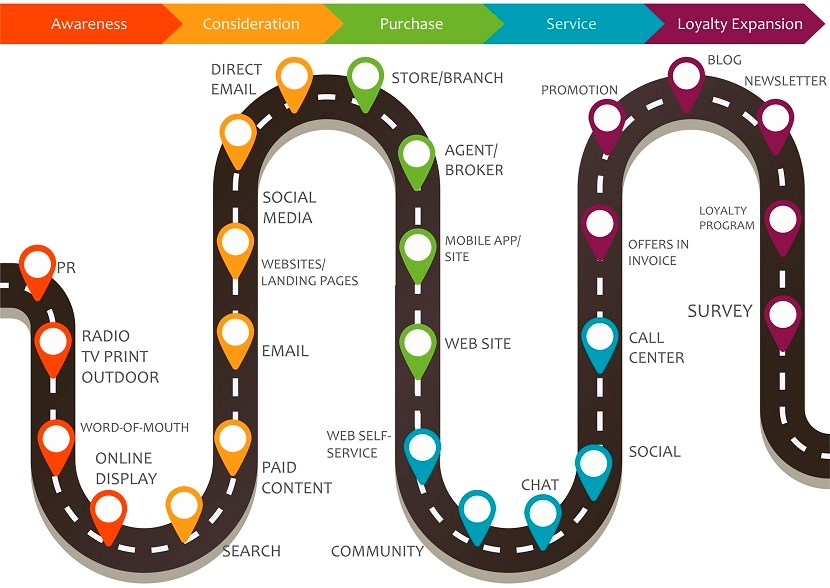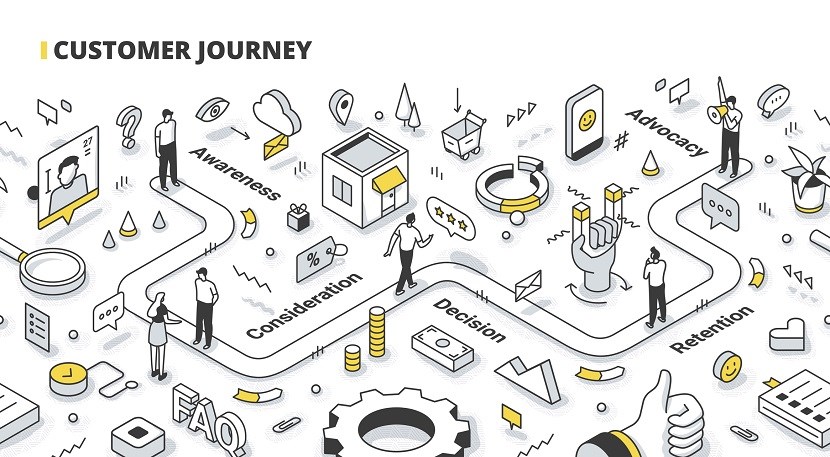The customer journey – How they experience your organisation
When moving from teaching to managing, it is important to understand how the different departments interact with each other. While there are many ways of doing this, looking at the customer journey is one way of seeing how the customer experiences their contact with your organisation through the various departments and people in your organisation.
What is the customer journey?
While there are several models, the customer journey can primarily be divided into three stages. Teachers primarily contact with the customer after they have purchased your services, but understanding the entire process means that it will be easier to put emphasis on customer service.
Pre-purchase
The first step in the customer journey is awareness. The customer becomes aware of your organisation through various channels. This could be marketing and advertising, a walk-in, or word of mouth. Word of mouth marketing is often considered very effective, but it is critical that the customer’s experience with your organisation is positive. Teachers play a big role here, and as a manager, it is important to make teachers aware of the role they play in attracting new customers through the service they deliver inside and outside of the classroom.
After becoming aware of your organisation, the customer compares, researches and generates knowledge that will inform their purchasing the decision. Part of this might be to visit your school, and look at the facilities, classroom, and the people. A professional appearance is very important, and this includes the classroom, cleanliness and the attitude of staff members. With the growing use of the internet and research being done online, a proper social media and online presence is very important. This use of the internet also means that customers often walk into a school having already decided that they want to purchase a language learning service, and the only real question is ‘Will they buy it from you?’ The importance of the impression the customer has of your organisation through online and/or face to face contact should not be underestimated.
Purchase
After gathering information and considering options, the customer makes a purchasing decision. The sales team play the most important role here, but it is important for the academic manager to know what the marketing message is, and what customer are promised at the point of sale. In language schools, the placement test and placement procedure form part of the sales journey and is a very good opportunity for the academic team and the sales team to collaborate and ensure that the first impression of the service that the organisation provides is a positive one. The documentation used in the purchasing process also plays an important role here as it captures important student data that can be used to analyse student needs, feed into your marketing drives, and help with identifying trends that could be important for your business.
Post-purchase
The two key teams in this stage is the academic team, which provides the actual service that the customer has purchased, and the customer management team, which ensures that customer complaints are adequately addressed and that they are happy with the service they are receiving during consumption of the service. After the service has been consumed, the customer should become a loyal customer, meaning they purchase again, or an advocate, meaning they are the source of your word of mouth marketing.

Key points in each stage
The items below are by no means an exclusive list, but just something to get you started on understanding the customer journey and how they experience your organisation. The best way to understand the journey is to walk it in their shoes. Imagine you are the customer and buy a product from your own company. This involves looking at touch points, meaning the points at which they come in contact with your organisation and the services you provide. These items below are some examples of touch point items that the customer uses to judge your organisation and their satisfaction.
Pre-purchase
- Usability of your website
- Phoning and asking for information
- The marketing message in your marketing materials
- The clarity of your marketing materials
Purchase
- The experience in centre or through the sales journey
- Your documentation
- The appearance of the school and the staff
- The attitude of staff members and how questions are dealt with
- How well your staff builds rapport during the sales process
Post-purchase
- The academic experience
- Complaints procedure
- Understanding changing needs
- Ease of advocacy

How can I learn more about the customer journey at my school?
One way to learn about the journey is to map out the journey in the different stages and look at the touch points where the customer comes in contact with your school. Then look at which departments are responsible for that contact and how they are dealing with it. In schools where there is a strong management team, you can often learn a lot from the different managers and how they manage the customer journey. If you work for a smaller school or own your own school, it is a very good exercise to determine how effectively you are dealing with customers during the journey and how you can identify areas to improve the journey. Reading business articles online is a good way to start understanding the power of the customer journey.
In future blogs, I will look at customer satisfaction and how it relates to the different stages of the customer journey, and also how the journey might differ if the customer and consumer isn’t the same person (for example with young learners or corporate courses where the contact person might be in Human Resources, but the consumer is a staff member in another department). I will leave with a quote from How to delight customers ‒ a very good article by George Pickering. ‘Quality is not the absence of defects as defined by management but the presence of value as defined by customers.’ That value is not only in the classroom, but all through the journey and if you manage the journey appropriately, you will have an advocate for life.


Comments
Write a Comment
Comment Submitted